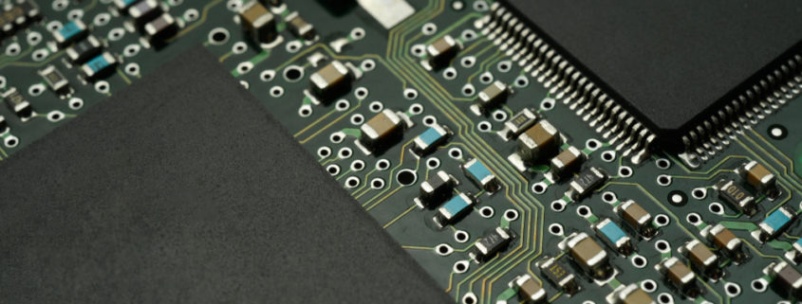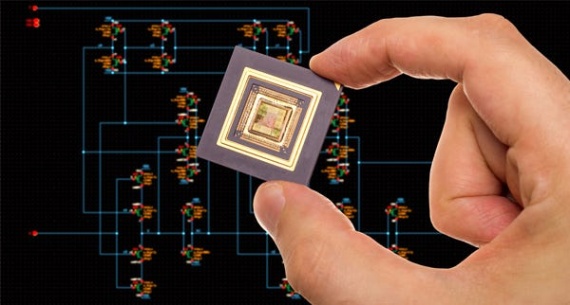Dive into the World of Analog IC Design!
Welcome to the exciting and innovative world of Analog IC Design! In this article, we will explore the fascinating realm of creative circuit design and how it can lead to innovative advancements in electronics. Analog IC Design is not just about creating functional circuits; it is a form of art that requires imagination, ingenuity, and skill. Let’s dive deep into this world and discover the endless possibilities it offers.

Image Source: i2.wp.com
Analog IC Design is all about designing circuits that manipulate continuous signals, such as voltage and current, to perform various functions. It involves creating intricate circuit layouts using transistors, resistors, capacitors, and other electronic components to achieve specific goals. Whether it’s designing a low-power sensor circuit or a high-speed data converter, Analog IC Design offers a playground for creativity and innovation.
One of the most exciting aspects of Analog IC Design is the opportunity to unleash your creativity. Unlike digital design, which operates on discrete values of 0 and 1, Analog IC Design allows for a more nuanced and expressive approach. It encourages designers to think outside the box and come up with unique solutions to complex problems. By combining technical knowledge with artistic flair, designers can create circuits that not only function flawlessly but also look visually appealing.

Image Source: linearmicrosystems.com
Innovative circuits are the hallmark of Analog IC Design. From power management circuits to audio amplifiers, each circuit presents a new challenge and opportunity for innovation. Designers must balance performance requirements with constraints such as power consumption, area, and cost to create circuits that push the boundaries of what is possible. By thinking creatively and experimenting with different design techniques, designers can develop circuits that are not only functional but also groundbreaking in their design.
Analog Electronics is like magic – it has the power to transform the way we interact with the world around us. By harnessing the principles of analog design, engineers can create devices that enhance our lives and expand our possibilities. From smartphones to medical devices, analog circuits play a crucial role in shaping the future of technology. By delving into the world of Analog IC Design, designers can discover the magic of electronics and unlock the potential for endless innovation.

Image Source: medium.com
The art of IC Design is a blend of technical expertise and creative vision. It requires a deep understanding of circuit theory, semiconductor physics, and design principles, as well as a keen eye for aesthetics and functionality. By mastering the art of IC Design, designers can create circuits that not only meet technical specifications but also captivate and inspire. Each circuit is a work of art, meticulously crafted and perfected to achieve a specific goal.
In conclusion, Analog IC Design offers a world of endless possibilities for creativity and innovation. By diving into this exciting realm, designers can explore the magic of analog electronics and push the boundaries of what is possible. With a blend of technical expertise, creative vision, and artistic flair, designers can create circuits that not only function flawlessly but also inspire and captivate. So, dare to dive into the world of Analog IC Design and unleash your creativity with innovative circuits that will shape the future of electronics.
Unleash Your Creativity with Innovative Circuits
Are you ready to dive into the exciting world of analog IC design and unleash your creativity with innovative circuits? Analog IC design is a fascinating field that allows you to create unique and inventive electronic circuits that push the boundaries of technology. Whether you are a seasoned professional or a curious beginner, there is something truly magical about designing analog circuits that can bring your ideas to life.
Analog IC design is all about creating circuits that manipulate continuous signals, such as voltage or current, as opposed to digital circuits that deal with discrete signals. This opens up a world of possibilities for designing circuits that can perform a wide range of functions, from amplifying signals to filtering out noise. The creative possibilities are endless, and the only limit is your imagination.
One of the most exciting aspects of analog IC design is the opportunity to experiment with different circuit topologies and components to create circuits that are truly unique. By combining your knowledge of electronics with your creativity, you can design circuits that are not only functional but also aesthetically pleasing. Imagine designing a circuit that not only performs its intended function flawlessly but also looks like a work of art.
Innovation is at the heart of analog IC design, and there is no shortage of inspiration to draw from. Whether you are inspired by nature, art, music, or technology, there are endless possibilities for creating circuits that reflect your passions and interests. By thinking outside the box and exploring unconventional ideas, you can create circuits that are truly one-of-a-kind and push the boundaries of what is possible in analog electronics.
One of the keys to unleashing your creativity in analog IC design is to constantly challenge yourself and push yourself out of your comfort zone. Don’t be afraid to try new things, experiment with different circuit configurations, and explore new technologies. The more you are willing to step outside of your comfort zone, the more opportunities you will have to create circuits that are truly innovative and groundbreaking.
Another important aspect of unleashing your creativity in analog IC design is to collaborate with others who share your passion for electronics. By sharing ideas, seeking feedback, and working together on projects, you can learn from others and gain new perspectives that can help you push the boundaries of your creativity even further. Whether you are working with a team of designers or collaborating with other enthusiasts in online forums, there is no shortage of opportunities to connect with others who share your passion for analog IC design.
In conclusion, analog IC design is a fascinating and rewarding field that offers endless opportunities for creativity and innovation. By exploring new ideas, experimenting with different circuit configurations, and collaborating with others, you can unleash your creativity and create circuits that are truly groundbreaking. So go ahead, dive into the world of analog IC design and see where your creativity takes you. The possibilities are endless!
Discover the Magic of Analog Electronics
Welcome to the enchanting world of analog electronics, where creativity and innovation come together to create magical circuits that power our modern devices. From simple audio amplifiers to complex sensor interfaces, analog electronics play a crucial role in shaping the future of technology. In this article, we will explore the fascinating realm of analog electronics and uncover the secrets behind its magic.
Analog electronics is the art of designing circuits that work with continuous signals, as opposed to digital electronics, which operate with discrete signals. This unique characteristic allows analog circuits to process a wide range of signals, making them versatile and adaptable to various applications. Whether it’s amplifying signals, filtering noise, or converting voltages, analog electronics provide the building blocks for a wide range of electronic devices.
One of the key elements of analog electronics is the use of operational amplifiers, or op-amps, which are versatile integrated circuits that can perform a wide range of signal processing functions. Op-amps can amplify signals, perform mathematical operations, and control feedback loops, making them essential components in many analog circuits. By harnessing the power of op-amps, designers can create innovative circuits that push the boundaries of what is possible in electronics.
Another magical aspect of analog electronics is the use of passive components such as resistors, capacitors, and inductors, which work together to shape the behavior of a circuit. By carefully selecting and combining these components, designers can create circuits that exhibit unique and interesting characteristics, such as filters, oscillators, and amplifiers. The ability to manipulate these passive components allows designers to unleash their creativity and design circuits that are as beautiful as they are functional.
In the world of analog electronics, creativity knows no bounds. Designers are constantly pushing the limits of what is possible, exploring new ideas and concepts to create circuits that are both innovative and practical. Whether it’s designing a low-power sensor interface for a wearable device or creating a high-fidelity audio amplifier for a Home entertainment system, analog electronics offers endless opportunities for creativity and exploration.
One of the most exciting aspects of analog electronics is the process of designing and testing circuits. From sketching out initial concepts to prototyping and testing, designers have the opportunity to experiment and iterate on their ideas, refining their designs until they achieve the desired performance. This iterative process allows designers to learn from their mistakes, explore new possibilities, and ultimately create circuits that are truly magical.
But analog electronics is not just about designing circuits – it’s also about understanding the underlying principles and theories that govern how these circuits work. By delving into the world of circuit analysis, designers can gain a deeper appreciation for the magic of analog electronics, learning how voltage, current, and impedance interact to create complex and fascinating circuits.
As we continue to explore the magic of analog electronics, we are reminded of the artistry and creativity that goes into designing these circuits. From the elegant simplicity of a basic amplifier circuit to the complexity of a precision voltage regulator, each circuit tells a story of innovation and ingenuity. By embracing the magic of analog electronics, designers can create circuits that not only function flawlessly but also inspire and captivate the imagination.
So, whether you’re a seasoned designer or a novice enthusiast, take a moment to appreciate the magic of analog electronics. Dive into the world of op-amps, passive components, and circuit analysis, and discover the endless possibilities that await you. With a bit of creativity and a touch of magic, you too can create circuits that push the boundaries of what is possible in the world of electronics.
Get Inspired by the Art of IC Design!
Analog IC design is a fascinating world where creativity meets technology to create innovative circuits for cutting-edge electronics. The art of IC design involves the careful crafting of intricate circuits that not only function flawlessly but also push the boundaries of what is possible in the world of electronics. It is a creative process that requires a deep understanding of electronics, a keen eye for detail, and a knack for thinking outside the box.
When diving into the world of analog IC design, you are greeted with a vast array of possibilities and opportunities to unleash your creativity. From designing power management circuits to audio amplifiers, the possibilities are endless. Each circuit presents a unique challenge that requires a creative solution, making IC design a truly rewarding experience for those who are passionate about electronics.
One of the most exciting aspects of analog IC design is the opportunity to work with cutting-edge technologies and push the boundaries of what is possible. Whether you are designing circuits for consumer electronics, automotive applications, or industrial equipment, there is always room for innovation and creativity in the world of IC design. It is a field where new ideas are constantly being explored and where the next breakthrough in electronics could be just around the corner.
Discovering the magic of analog electronics is a thrilling journey that requires a combination of technical know-how and creative thinking. It is a field where imagination and innovation go hand in hand, allowing designers to create circuits that not only function reliably but also stand out as works of art in their own right. The art of IC design is a blend of science and creativity, where the possibilities are limited only by your imagination.
As you delve deeper into the world of analog IC design, you will find yourself inspired by the creativity and ingenuity of those who have come before you. From classic circuit designs that have stood the test of time to cutting-edge innovations that are shaping the future of electronics, there is a wealth of inspiration to be found in the world of IC design. By studying the work of others and experimenting with your own ideas, you can tap into a rich tradition of creativity and innovation that spans decades.
The art of IC design is a collaborative process that thrives on the exchange of ideas and the sharing of knowledge. Whether you are working on a team of designers or tackling a project solo, there is always something new to learn and discover in the world of analog electronics. By collaborating with others and drawing inspiration from different sources, you can create circuits that are not only technically sound but also visually stunning and aesthetically pleasing.
In conclusion, the art of IC design is a creative and rewarding field that offers endless opportunities for innovation and exploration. By tapping into your creativity and pushing the boundaries of what is possible, you can create circuits that not only function flawlessly but also stand out as works of art in their own right. So, dive into the world of analog IC design, unleash your creativity, and discover the magic of electronics!
analog ic design






